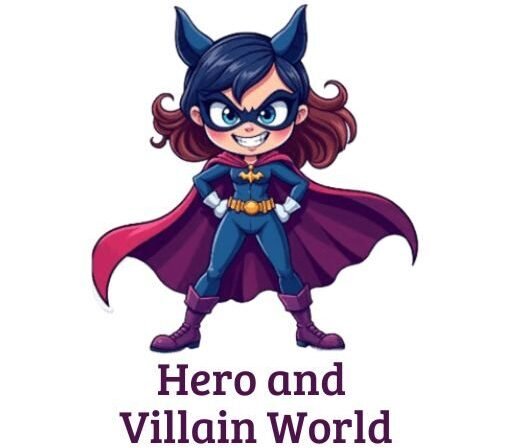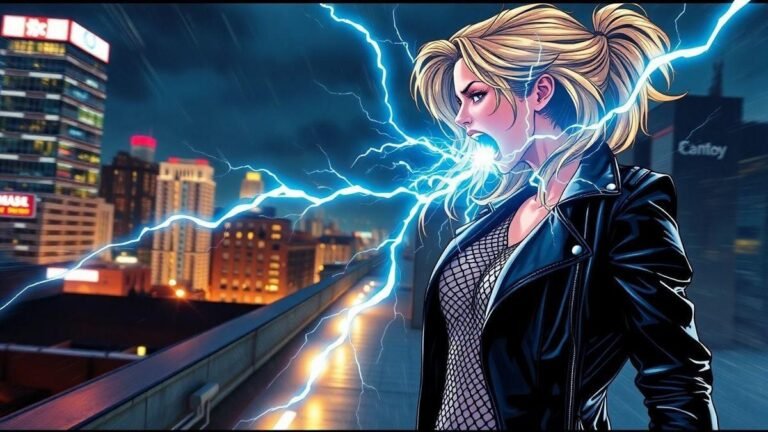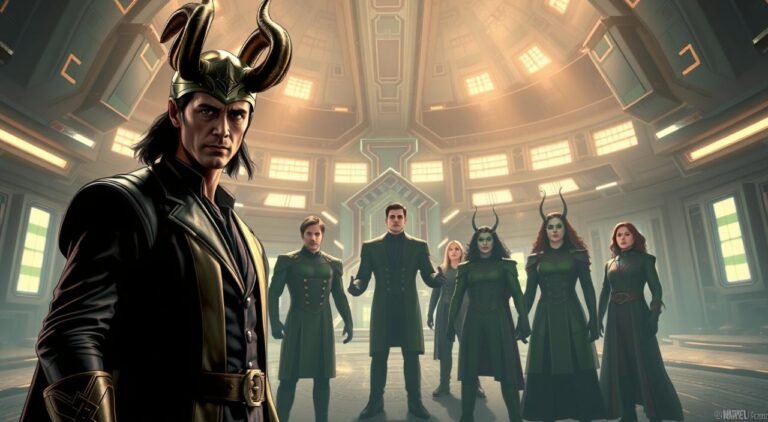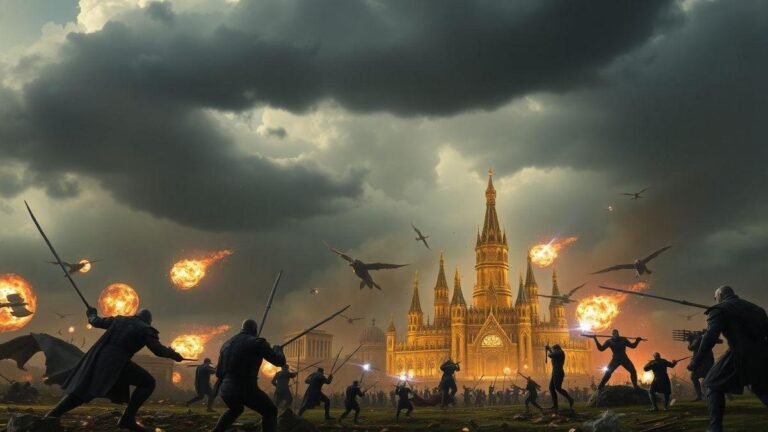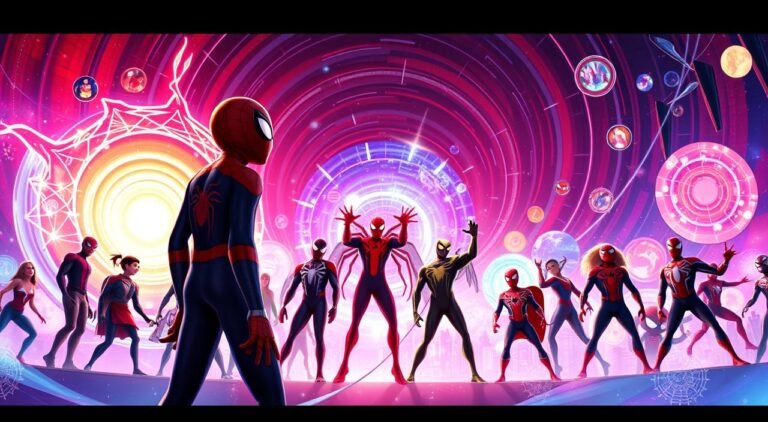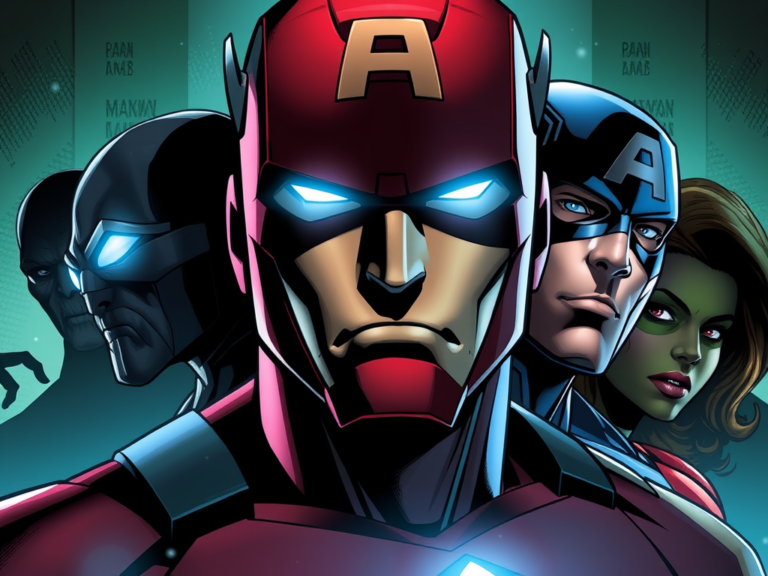Hulk vs. Abomination: A Gamma-Powered Showdown
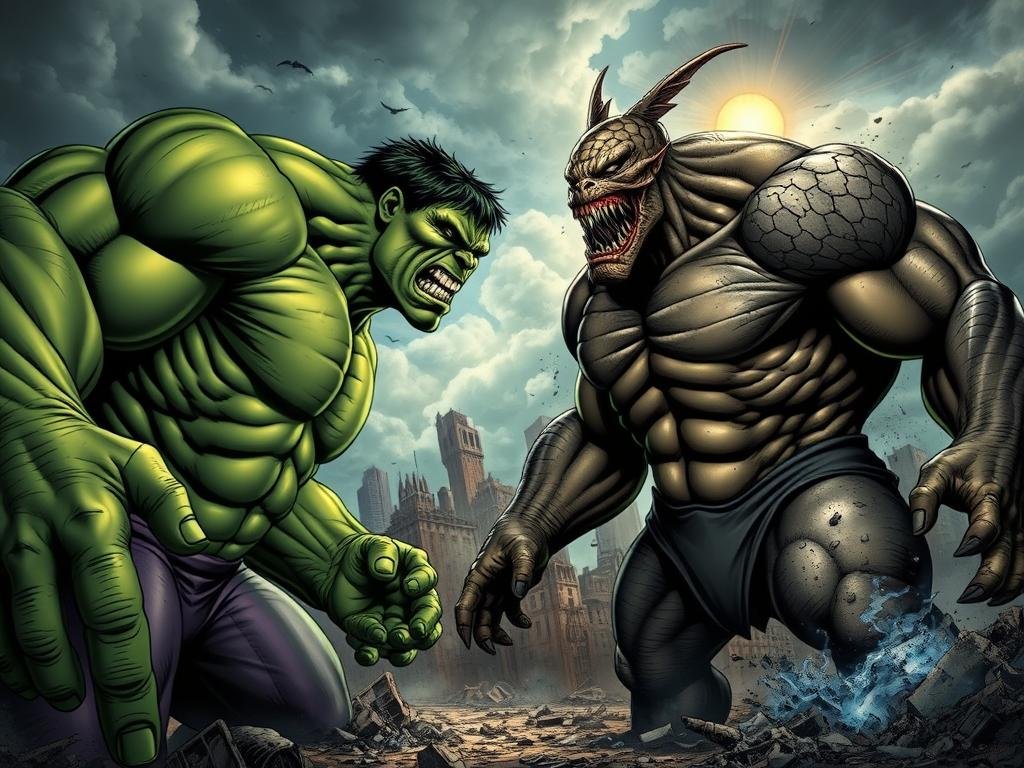
I’ll never forget the first time I saw what gamma radiation could do. Not in a lab, but on the screen—watching Bruce Banner’s veins turn green as his heartbeat echoed like thunder.
It wasn’t just a transformation. It was a scream trapped in a body, a metaphor for how anger can reshape us.
We’ve all felt that simmering rage. But what happens when science weaponizes it? That’s the story behind two beings born from gamma experiments: one a reluctant hero, the other a soldier twisted by obsession. Their clash isn’t just about strength—it’s about losing yourself to the storm inside.
The military compound battles and Harlem’s shattered streets show the real stakes. One creature smashes through tanks to save lives.
The other uses bone spikes and strategy to prove he’s better. Both are impossibly strong, yet their power comes from entirely different places—rage versus calculation.
What fascinates me isn’t who hits harder. It’s how these gamma-powered titans mirror our own struggles. How do we handle the parts of ourselves we can’t control? When does strength become a cage? Let’s break down the science, the scars, and the moments that defined this explosive rivalry.
The incredible Hulk is the strongest Super Hero in the world, but he”s about to meet the equally strong Abomination! And unlike Hulk, the Abomination”s intelligence is still intact. Will Hulk meet his match when these two powerful green titans collide?
Introduction to the Gamma-Powered Rivalry
What fascinates me about gamma mutations isn’t just the raw power—it’s how they expose our deepest flaws.
Take Doc Samson, a psychiatrist turned green-haired powerhouse. His story shows that even those who study the mind can’t escape gamma’s grip. These experiments don’t just alter bodies; they rewrite destinies.
Setting the Stage for the Ultimate Showdown
When two beings share the same origin but opposite goals, every collision becomes personal. One channels rage into protective instincts.
The other weaponizes envy, sharpening bone spurs like trophies. Their strength durability isn’t just about surviving punches—it’s about whose psyche breaks first.
Why This Comparison Matters to Me
I’ve always seen gamma powers as a metaphor for unchecked ambition. The term “gamma-powered” isn’t just sci-fi jargon. In comics, it represents irreversible change—a way to explore how power corrupts or redeems.
That’s why the hulk abomination dynamic resonates: it’s a battle between losing control and craving it.
Their clashes aren’t mindless brawls. They’re debates about human nature, fought with skyscraper-sized fists. And honestly? That’s why we keep coming back.
Origins: The Transformative Journeys of Bruce Banner and Blonsky
Science has a way of revealing truths we’re not ready to face. For two men, gamma radiation didn’t just rewrite their DNA—it exposed the raw edges of human ambition. Their stories start in labs, but end in shattered identities.
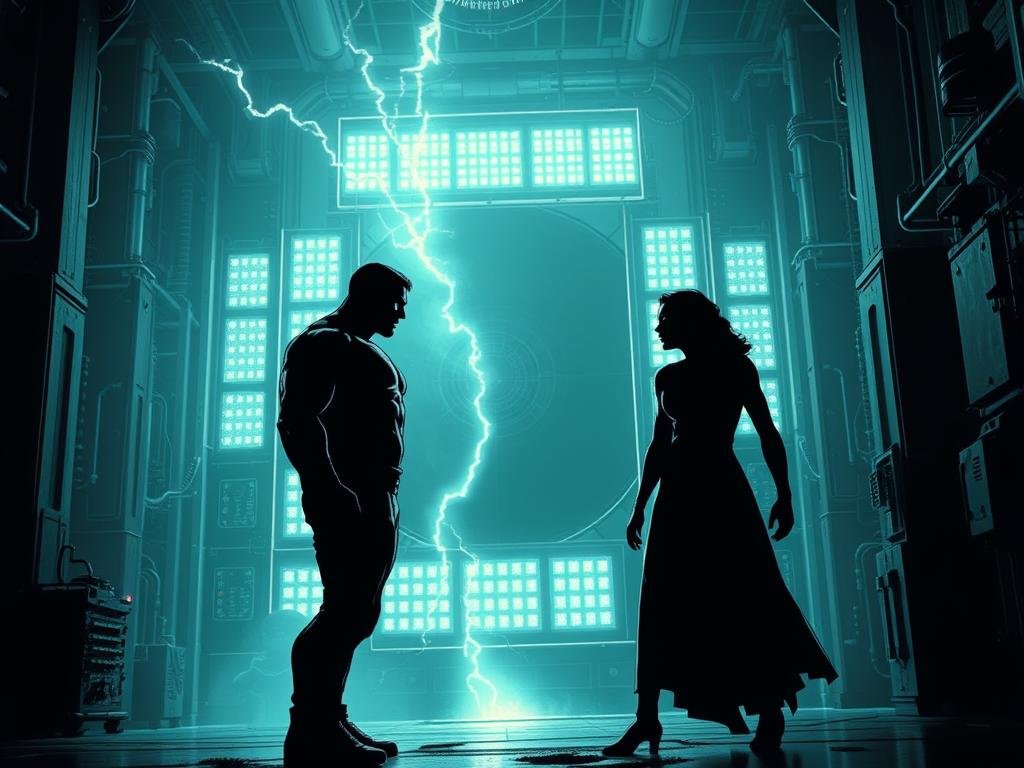
Bruce Banner’s Tragic Transformation
I’ve always wondered: what does it cost to survive your own mistakes? Bruce Banner learned the hard way. His work on Project Gamma Pulse—a military experiment—turned lethal when radiation flooded his body.
The accident birthed the Incredible Hulk, a being of pure rage trapped in a scientist’s mind.
Unlike Doc Samson, who later embraced his gamma-altered form, Banner saw his condition as a curse. Every transformation felt like drowning in a storm he couldn’t control. Yet beneath the destruction, there was always a flicker of hope—a man fighting to surface.
Emil Blonsky’s Path to Becoming the Abomination
Emil Blonsky didn’t stumble into power. He clawed for it. After taking a Super Soldier Serum, he demanded gamma exposure to outmatch Banner. The result? A monstrous form with jagged bones and a hunger for dominance.
Where Banner’s change was accidental, Blonsky’s was deliberate. His envy sharpened into the Abomination, a creature that relished chaos. Their opposing origins created a perfect rivalry: one driven by desperation, the other by obsession.
| Factor | Bruce Banner | Emil Blonsky |
|---|---|---|
| Catalyst | Accidental exposure | Intentional sabotage |
| Physical Change | Green skin, size shifts | Bone spikes, gray scales |
| Motivation | Survival & protection | Power & recognition |
Both men were reshaped by gamma energy, but their journeys redefine strength. Banner’s tragedy lies in his humanity. Blonsky’s? In losing it completely.
Hulk vs. Abomination: A Gamma-Powered Showdown – A Deep Dive
What makes gamma mutations fascinating isn’t just the science—it’s how they reveal hidden truths about control. I’ve always noticed that unstable power sources create the most compelling stories.
Take the hulk abomination dynamic: two forces born from gamma energy, yet polar opposites in execution.
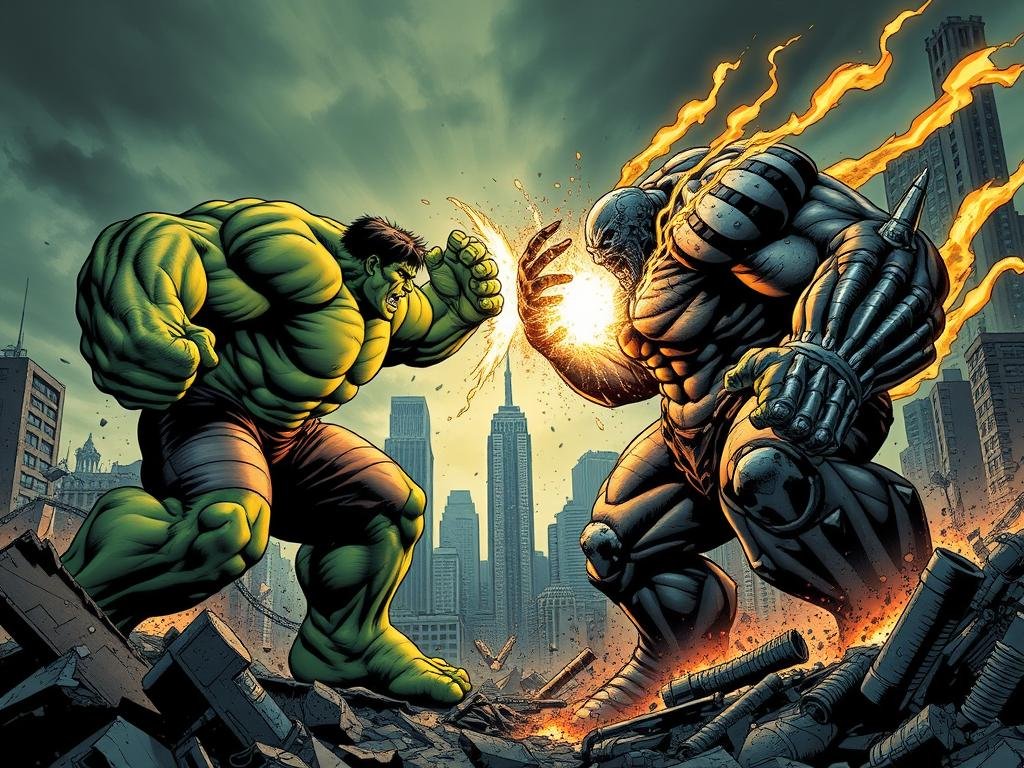
Stability vs. Volatility
One key difference lies in transformation control. While one figure shifts unpredictably due to emotional spikes, the other maintains calculated precision. In the MCU’s Harlem battle, we see this play out: erratic smashes versus tactical strikes at weak points.
Emotion as Fuel
Anger isn’t just a trigger—it’s a way to amplify power. Rage fuels exponential growth in one combatant, while the other relies on fixed enhancements. Comics like Incredible Hulk #377 show how escalating emotions can turn the tide mid-fight.
| Aspect | Gamma Instability | Controlled Mutation |
|---|---|---|
| Transformation Trigger | Emotional stress | Premeditated choice |
| Strength Durability | Scales with anger | Fixed baseline |
| Battle Strategy | Reactive bursts | Precision targeting |
Timing matters too. In the 2008 film, a single moment of clarity—not raw strength—decides the outcome. This mirrors real-life conflicts: power surges mean little without the right instinct.
These contrasts shape how we perceive their rivalry. One embodies chaos seeking purpose. The other represents control craving validation. And honestly? That tension makes every clash unforgettable.
Unpacking Gamma Powers and Abilities
Gamma radiation rewrites biology in ways that still shock me. These characters aren’t just strong—they’re living experiments in extreme physics. Their mutated body structures defy every rule of human anatomy, creating combatants who fight like natural disasters.

Superhuman Strength and Leaping Ability
Imagine lifting 100 tons without breaking a sweat. That’s baseline for these gamma giants. But here’s the twist: one’s strength multiplies with rage, while the other plateaus. In Incredible Hulk #142, one leap covered three miles—enough to outpace fighter jets.
| Trait | Emotional Surge | Static Power |
|---|---|---|
| Max Lift Capacity | Unlimited* | 175 tons |
| Vertical Leap | 3 miles | 1.2 miles |
| Speed Boost | Adrenaline-based | Fixed rate |
Stamina, Healing, and Regeneration
Their durability isn’t just about taking hits—it’s about outlasting opponents. Cellular regeneration lets them heal bullet wounds in minutes. But there’s a catch: one fighter’s healing slows when exhausted, while the other’s strength durability remains constant.
I’ve always found this imbalance fascinating. As Bruce Banner once muttered: “The angrier I get, the harder I am to put down.” That’s gamma’s paradox—power tied to emotional volatility versus engineered stability.
Iconic Battles and Clash Timelines
Comic book battles often feel like fireworks—brief but unforgettable. What sticks with me isn’t just the destruction, but how these fights redefine heroes and villains. Their clashes become turning points, shaping entire universes.

Memorable Showdowns in the Comics
The Immortal Hulk #45 changed everything. With jagged claws and a distorted face, the abomination became a walking nightmare. This wasn’t just a battle—it was a brutal chess match. One combatant used rage as a weapon. The other exploited psychological weak spots.
I still remember the panel where concrete shattered under their feet. It showed power isn’t just about strength. Timing matters. So does knowing when to hold back.
Notable Moments in Their Rivalry
The 2008 Harlem fight redefined their dynamic. Unlike the comics, this clash emphasized strategy over chaos. Bone spikes met calculated grabs for leverage. What decided it? A chokehold using a chain—proof that raw force isn’t the only way to win.
| Battle | Location | Outcome | Impact |
|---|---|---|---|
| 2008 Film Showdown | Harlem Streets | Victory via tactical restraint | Reinforced Hulk as protector |
| Immortal Hulk #45 | Underground Facility | Stalemate with mutual damage | Highlighted psychological warfare |
These fights taught me something: true power lies in balance. Smash too hard, and you lose yourself. Hold back too much, and you lose the fight. It’s a line both characters keep crossing—and that’s why we watch.
Marvel Cinematic Universe vs. Comic Book Portrayals
Adaptations shape how we see characters—sometimes softening edges, other times sharpening them. When I first saw the Incredible Hulk’s 2008 redesign, it struck me how the MCU balances familiarity with fresh takes.
Their approach isn’t just about updating visuals. It’s about redefining what these icons represent in modern storytelling.
How the MCU Reimagined Their Look and Personality
Take Blonsky’s evolution. In Shang-Chi, his scales gleam with aquatic textures—a far cry from the jagged comic version.
This design choice hints at controlled mutation, not chaotic transformation. His personality shifts too. Once a brute obsessed with dominance, he now cracks dry jokes while sparring. It’s a risky twist, but it humanizes him.
Comics like Incredible Hulk #377 showcase raw, unchecked rage. One panel shows the green goliath ripping a tank apart like paper.
The MCU tempers this with moments of vulnerability. Remember Banner’s labored breathing after reverting? Those quiet beats make the spectacle relatable.
| Aspect | Comics | MCU |
|---|---|---|
| Abomination’s Origin | Gamma exposure accident | Military experiment |
| Hulk’s Intelligence | Separate personas | Integrated “Smart” version |
| Blonsky’s Redemption | Rarely explored | Central to She-Hulk arc |
I’ve grown to appreciate both versions. Comics let power run wild. Films ground it in consequences. Over time, these differences remind us that legends evolve—and that’s okay. After all, “The only constant in gamma mutations is change,” as Doc Samson once mused. Maybe the MCU will explore his green-haired wisdom someday too.
Behind the Scenes: Evolution of Gamma Mutate Physiology
Gamma mutations bend reality in ways that thrill scientists and storytellers alike. While real gamma rays damage DNA, Marvel’s version rewrites it—supercharging cells with unstable energy. I love how writers blend half-truths with pure imagination to make these characters feel plausible.
Scientific Explanations and Creative Liberties
Here’s the twist: real mutations occur at the cellular level through radiation-induced breaks. Marvel flips this by having gamma bursts enhance tissue instead of destroying it. Their version lets cells absorb cosmic radiation like batteries, explaining superhuman durability.
Take bone density. Normal humans have 15% porous bones. Gamma mutates? Near-zero gaps. This lets them withstand impacts that would liquefy others. But writers add flair—like rage-fueled adrenaline spikes that boost power beyond physical limits.
| Aspect | Real Science | Marvel’s Take |
|---|---|---|
| Cell Regeneration | Limited to stem cells | Whole-body healing in minutes |
| Energy Source | ATP from mitochondria | Gamma radiation absorption |
| Durability Limit | Based on material strength | Scales with emotional state |
Creative liberties shine in resurrection mechanics. The “Green Door” concept lets certain mutates cheat death—a metaphor for trauma’s lingering effects. It’s not science, but it makes their struggles relatable. After all, who hasn’t wished for a second chance?
Influence on Marvel’s Legacy and Cultural Impact
Marvel stories often mirror our deepest struggles, but few rivalries cut as close to the bone as this one. Their clashes aren’t just fights—they’re cultural mirrors reflecting societal fears about power and identity.
When Bruce Banner grapples with his alter ego, it speaks to anyone who’s ever felt trapped by their own nature.
How Their Fight Reflects Broader Themes
The character dynamics here explore duality in ways that feel timeless. One represents the fear of losing control, the other the danger of chasing perfection.
Comics like Incredible Hulk #181 turned their battles into allegories for addiction and trauma, resonating with readers during the 1970s counterculture movement.
What fascinates me is how their rivalry evolved with the times. The 2008 film’s Harlem battle became a visual metaphor for urban chaos post-9/11, while modern comics tackle mental health through gamma metaphors.
Each moment of conflict reinforces Marvel’s knack for blending spectacle with substance.
| Theme | Duality | Cultural Impact |
|---|---|---|
| Representation | Man vs. Monster | 1970s societal unrest |
| Redemption Arcs | Banner’s struggle | Modern mental health narratives |
| Legacy Moments | Comic #181’s record sales | Film’s visual storytelling shift |
Stan Lee once said, “With great power comes great responsibility.” But this rivalry asks: what happens when power isn’t a choice? That question keeps their story relevant—and ensures their legacy will outlast any battle.
Future Speculations and Storyline Possibilities
What keeps me hooked to gamma sagas isn’t the explosions—it’s the endless future twists. Recent comics like Gamma Flight #5 hint at a new level of complexity, where allies become wild cards.
With Professor Hulk’s merged persona stabilizing, I wonder: will we see a smarter, more strategic version of chaos?
Potential Developments in Upcoming Comics and Films
The Mother of Horrors arc introduces cosmic stakes. Imagine a way for gamma mutates to influence reality itself—like rewriting DNA across dimensions.
This could force uneasy alliances between former enemies. One leak suggests a “Gamma Council” forming, blending heroes and reformed villains.
MCU teases also excite me. The She-Hulk series softened Blonsky’s edges, but what if he backslides? A recent concept art leak shows bone spikes fused with tech—a hybrid form perfect for battle sequences that blend brute force with gadgets.
- Professor Hulk mentoring new gamma-powered recruits
- Time-hopping narratives exploring alternate power origins
- Shared consciousness storylines (think Banner’s mindscape as a battleground)
As Incredible Hulk #1 puts it: “The green door never closes—it just leads to darker rooms.” That’s the beauty of these stories. Every resolution plants seeds for the next catastrophe. And honestly? I can’t wait to see which door they kick down next.
Conclusion
Every great story hinges on contrasts that reveal deeper truths. The rivalry between Bruce Banner and Emil Blonsky—two men reshaped by gamma experiments—shows how identical origins can birth opposing legacies.
One fights to protect, the other to dominate. Their battles, like the 2008 film’s Harlem clash, aren’t just about powers; they’re about what happens when ambition overrides humanity.
What sticks with me isn’t just the shattered streets or bone-crunching hits. It’s the quiet moments—a scientist’s fear of his own body, a soldier’s envy curdling into obsession. These characters mirror our struggles with control, asking: Can we outgrow our worst impulses?
As the MCU evolves, so does the complex character once called Abomination. His potential return in projects like Thunderbolts proves some conflicts are timeless.
After all, gamma energy doesn’t fade—it adapts. And that’s why their story still matters. The future might bring new battles, but the heart of this rivalry? That’s forever.
FAQ
Q: Why are Bruce Banner and Emil Blonsky often compared?
A: Both characters share a connection to gamma radiation, which altered their biology. Bruce’s transformation stems from a lab accident, while Emil’s comes from a deliberate military experiment. Their stories explore how trauma and ambition shape power differently.
Q: What distinguishes their powers despite both having gamma abilities?
A: Bruce’s strength grows with his anger, creating unpredictable power spikes. Emil’s physical enhancements are fixed but lack emotional triggers. Think of it like a storm versus a bulldozer—one adapts, the other plows through.
Q: How does healing factor into their battles?
A: Bruce’s regeneration works faster under stress, letting him recover mid-fight. Emil’s durability is more static, relying on armored skin. This difference often tips prolonged clashes in Bruce’s favor over time.
Q: Which comic arcs best showcase their rivalry?
A: Incredible Hulk #181 and 2008’s World War Hulk spin-offs highlight their dynamic. These stories pit raw rage against tactical brutality, emphasizing how their motivations clash as hard as their fists.
Q: Did the MCU change their characters from the comics?
A: Yes! The 2008 film gave Emil a military backstory, making his envy of Bruce’s power more personal. Comic Emil was originally a Soviet spy, but the MCU’s shift made their conflict feel grounded in real-world ambition.
Q: Could gamma mutates like them exist in real science?
A: Gamma radiation in reality causes harm, not superpowers. Marvel takes creative liberties, blending biology with fiction. I love how they imagine gamma as a wildcard—unlocking potential but demanding a heavy price.
Q: What themes do their fights represent in Marvel stories?
A: Their clashes symbolize nature vs. nurture and power’s corrupting influence. Bruce struggles to control his gift, while Emil embraces destruction. It’s a timeless debate about responsibility versus desire.
Q: Will we see them face off again in future MCU projects?
A: Rumors suggest Emil might return in Captain America: Brave New World or Thunderbolts. With Marvel’s multiverse angle, even alternate versions could reignite this explosive rivalry. Fingers crossed!
